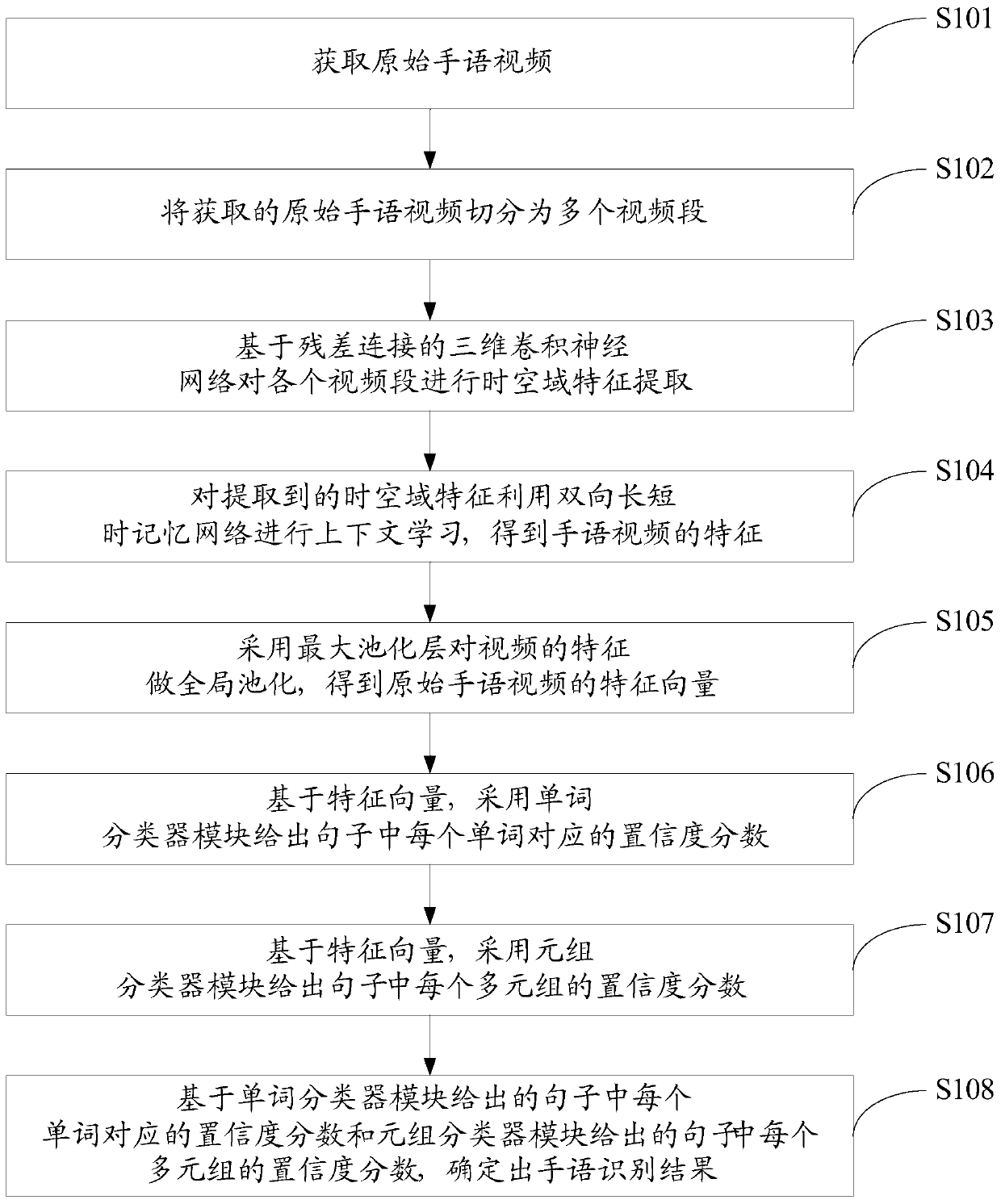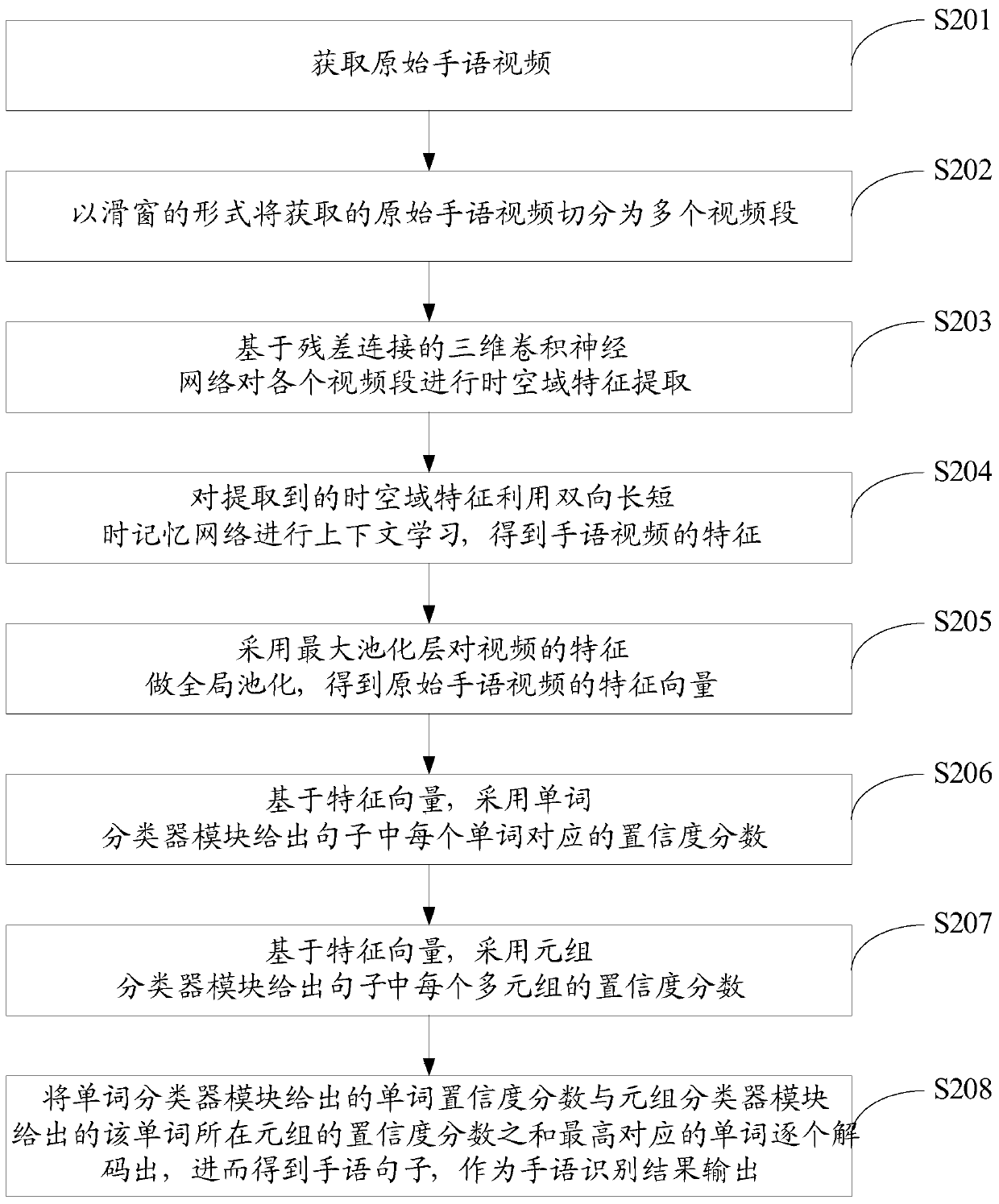Video continuous sign language recognition method and system based on grammar classifier
A grammatical classification and classifier technology, applied in the field of data processing, can solve the problems that the decoder cannot obtain the real label, cannot model the partial expression of sign language, and cannot effectively avoid the inherent shortcomings of the encoder-decoder structure, etc.
- Summary
- Abstract
- Description
- Claims
- Application Information
AI Technical Summary
Problems solved by technology
Method used
Image
Examples
Embodiment Construction
[0045] The following will clearly and completely describe the technical solutions in the embodiments of the present invention with reference to the accompanying drawings in the embodiments of the present invention. Obviously, the described embodiments are only some, not all, embodiments of the present invention. Based on the embodiments of the present invention, all other embodiments obtained by persons of ordinary skill in the art without making creative efforts belong to the protection scope of the present invention.
[0046] like figure 1 As shown, it is a method flow chart of Embodiment 1 of a video continuous sign language recognition method based on a grammar classifier disclosed in the present invention, and the method may include the following steps:
[0047] S101. Obtain the original sign language video;
[0048] When semantic recognition needs to be performed on continuous sign language videos, the original sign language videos to be recognized are first obtained. ...
PUM
 Login to View More
Login to View More Abstract
Description
Claims
Application Information
 Login to View More
Login to View More - R&D
- Intellectual Property
- Life Sciences
- Materials
- Tech Scout
- Unparalleled Data Quality
- Higher Quality Content
- 60% Fewer Hallucinations
Browse by: Latest US Patents, China's latest patents, Technical Efficacy Thesaurus, Application Domain, Technology Topic, Popular Technical Reports.
© 2025 PatSnap. All rights reserved.Legal|Privacy policy|Modern Slavery Act Transparency Statement|Sitemap|About US| Contact US: help@patsnap.com



